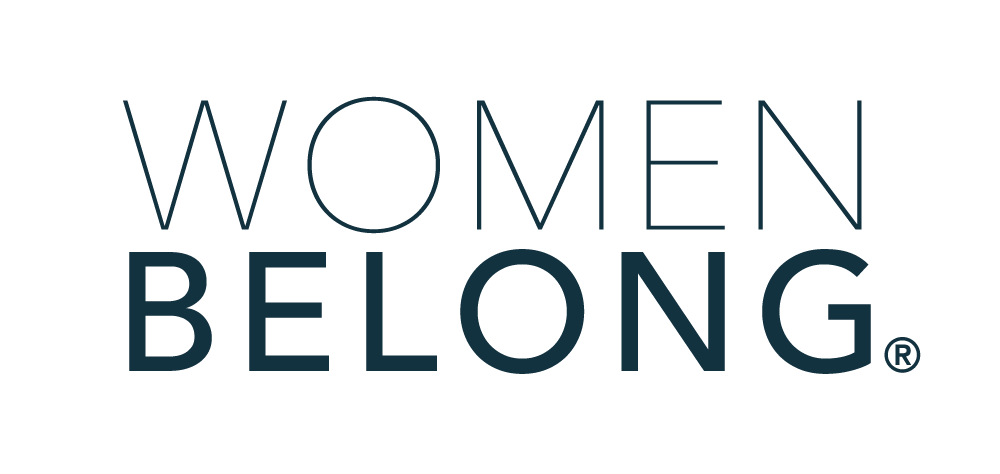Are you frustrated and spinning your wheels on social media? Do you feel like whatever you do for your business, it’s not enough? Maybe you should do less!
I’m a firm believer in the maxim of, “do it right, or don’t do it at all.” Yes, that’s my relentless perfectionism talking, but it’s also a good rule-of-thumb when it comes to social media for business. If you think in terms of traditional media, you wouldn’t run a print ad that was drawn by your seven-year-old in crayon, right? So why are you letting a young intern run your social media presence, or, worse yet, trying to be on every social media platform but not doing any of them well?
Just One Social Platform
When I work with new small business clients, I encourage them to choose just one organic social network to become their primary means of connecting with their community. Keep in mind that this doesn’t mean that social media is the only marketing you’re doing – you’re hopefully also using email marketing, in-person network, and perhaps some paid advertising, too – but as far as social media goes, stick with one network, make it work for you, and then decide if you want to move on and add others.
Let’s use the following six questions to help you determine which social network you should make primary for your small business. Again – this is not for advertising – it’s just for organic, community-building activity and communications.
1. Which Networks Do You Use and Love?
My first criteria for choosing a social network is that you’ve gotta love it. If you hate the platform or what you have to do on it, you won’t be motivated to put the appropriate time and energy into it.
So consider first which social networks you use for yourself, personally. Are you a big Instagram fan? Do you hang out on Facebook all the time? Or do you like to tweet along with your favorite TV show every week? If you aren’t on social media at all, skip ahead to the next question.
Let’s make this easier with only four choices:
That doesn’t mean that networks like LinkedIn and YouTube aren’t valuable, only that they behave differently from those above, so we’re going to set them aside to discuss at a later date.
Did you choose a network that you like? Write this down and move on to Question 2. Choose a runner-up, too, just in case.
2. Who Do You Sell To In Your Business?
This is an important question: in your small business, do you sell your products/services to other businesses (business-to-business or B2B), or to consumers (business-to-consumer, or B2C)? The social network you choose will be in part dependent on who your end customer is.
If you sell to other businesses, assume that Facebook is not the best organic platform for you. It’s quite possibly great for advertising, but as a social network, your brand posts may get overlooked in favor of people’s conversations about kids, travels, and politics. Same goes for Pinterest, it’s not necessarily the best network for B2B brands; though it can be of use, I wouldn’t make it primary. So if you’re a B2B company and you chose Facebook or Pinterest in Question 1, please use your runner-up platform and continue.
If you sell to consumers, you can use any of the four networks well, though Twitter would be my last choice for a consumer brand as it can be difficult to master. Therefore, if you chose Twitter as your fave, please use your runner-up platform and continu
3. Is Your Audience Male or Female?
You likely have an idea of who your primary audience is, so think about the majority of your current customers: are they male-identified or female-identified? If you’re just starting out, imagine who would be most likely to buy your product or services.
If your audience is primarily male-identified, it’s likely that Pinterest isn’t the best platform for you, as it’s a predominantly female-driven network. So if you chose Pinterest in one of the earlier questions, please move on to another platform, your next runner-up. For all other networks, keep going.
4. What’s the Age of Your Audience?
Social networks pretty conveniently break down into a few different age demographics: users who are ages 18-29, ages 30-49, and ages 50+.
Use the following guidelines to determine if the network you’ve chosen thus far is a good fit for your audience:
Ages 18-29: Best network is Instagram, followed by Twitter and Pinterest.
Ages 39-49: Best network is Facebook, followed by Instagram and Pinterest.
Ages 50+: Best network is Facebook, with Instagram or Pinterest distant next choices.
Do you still have your favorite network from Question 1, or have you swapped networks out a bit? No worries, this isn’t set in stone. Keep going.
5. What Are Your Business Goals for Social Media?
Now let’s examine why you’re using social media in the first place. Hopefully you have an idea of what your business goals are for establishing a social presence. Let’s assume it’s one or more of the following:
- Develop brand awareness for your brand
- Acquire names for your mailing list or network
- Retain customers you already have
- Provide customer service online
- Sell or generate leads directly through social media
The following networks are best at achieving each of these goals:
Facebook: customer retention and customer service
Instagram: brand awareness, customer retention, customer service
Twitter: brand awareness, name acquisition, customer service, sales/lead generation
Pinterest: brand awareness, name acquisition, sales/lead generation
Now consider the social network that seems to be your first choice up until this point. Does that network, and your primary business goals for using social, align? If not, you might consider making a different network choice.
6. What’s Your Personal Zone of Genius?
Lastly, you’ll want to choose a social network that complements your skillset and interests. Yes, you’ve already identified a favorite network from Question 1, but perhaps you have interests that go beyond that network. Consider the following:
- If you love writing, Facebook and Twitter are great networks for you.
- If you love taking and manipulating photos and graphics, Instagram and Pinterest are great choices.
- If you like being on video, Facebook and Instagram are good bets.
- If you like networking with people, Instagram and Twitter are good choices.
- If you like organizing things, Pinterest will probably be your jam.
This is the last bit of data you’ll fold into your social platform analysis. Don’t get too hung up on it – if all signs point to Facebook but you love photos, you can still make that work. My major caution would be don’t put yourself in a box that truly doesn’t fit; if you don’t like being on video today, you probably won’t like it tomorrow, and should choose Facebook or Instagram only if all of the other criteria pointing to those networks are very strong.
Choose One Social Network and Give It Time
Hopefully these six questions have helped you narrow down one main social platform for your business. Maybe you feel like there are two, and that’s fine, but choose just one of them to focus on at the start, even if it means you’re going to let one (or more) of your existing platforms sit dormant for a little while.
Be consistent in working on your chosen platform every day (or at least every weekday), with one or more posts to the network, engaging with your community, and reaching out to others. Give this a minimum of four-to-six weeks of dedicated effort; it need not be more than 15-20 minutes a day, but it should be as close to every day as you can make it. Being regularly present in the network is more important that they type of content or even volume of content you put into it.
Still have questions about social networks? Reach out to me on Twitter or send a message via the Women Belong contact form and I’ll be happy to help!
Content provided by Women Belong member Stephanie Schwab









































 Why Heroine?
Why Heroine? Women Belong Book Club: The Heroine's Journey
Women Belong Book Club: The Heroine's Journey Women Belong Progressive Networking Lunch - Glenview IL
Women Belong Progressive Networking Lunch - Glenview IL Introductions - Members Only
Introductions - Members Only Connections - ZOOM Networking Event
Connections - ZOOM Networking Event